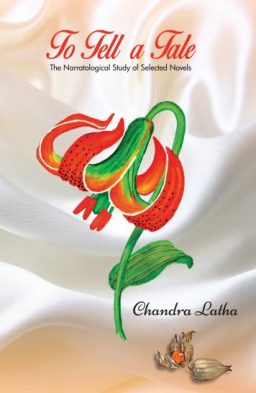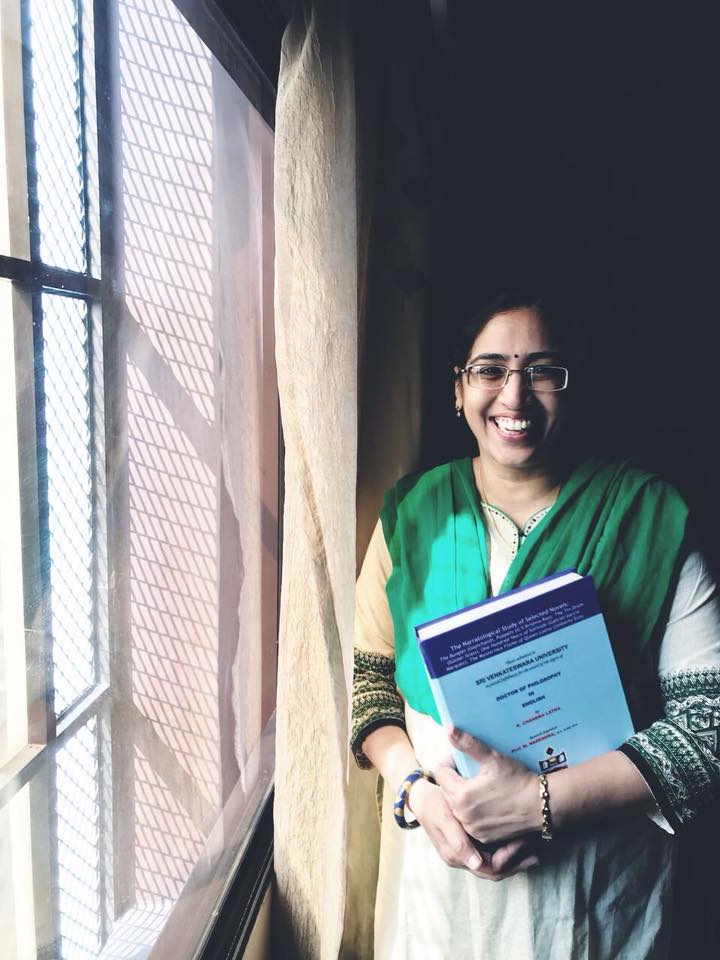
To tell a tale-24
(Chapter-7 Part-1)
-Chandra Latha
The Narrative of Life: Conclusion
The selected novels of this study are from various parts of the world. The English translations of the original texts, written in the native languages of the novelists, namely Telugu, German, Spanish and Italian are used to study the distinctive narrative styles of the novels. European and Latin American novels are translated during the lifetime of the novelists. The translations are done in close association with the original novelists and translation is approved and appreciated by them. Whereas Telugu novels are translated very recently, and there is no chance for the original writers to participate in the translation of the text.
Initially, the chapter-wise summery of the unique narrative features of these five selected novels are presented.
In Chapter-II, Falling from the Peak: The Bungler, which is considered as the first psychological and psycho-analytic novel in Telugu, the novelist Gopichand narrates his novel with primary focus on inner self of the main character, Sitarama Rao. Hence, this novelistic narrative exhibits both psychological and psychoanalytical ideas of Sigmund Freud, Carl Jung and Alfred Adler popular at that time.
The incipit of The Bungler gives clear hints of the retrogressive journey of the main character, Sitarama Rao. With an overt narrator with a purposeful voice sets the narrative tone to complete the definitive tasks of the narrative, the narrative situation becomes naturally authorial. The narrative type is hetero-diegetic with an omniscient narrative mode. The narrative tone is achieved through the narrator’s neutral or matter-of-fact voice and thought out words and ideas that enables the possibility of super simple narrative style.
The beginning of the novel with the plain and straight sentence, “Sita Rama Rao’s life is rather odd.” The reader is at once given hint for some abnormal odd that is going to take place soon in the novel and rouses curiosity about the narrative.
Gopichand who often expressed uneasiness of fixed narrative frames, enables his story to evolve over the fast moving narrative frames, a typical style popular in films called as montage. The existential pursuit of an incompetent man is eventually evolved through this montage of different forms, techniques, theories and ideas presented in a fast moving narrative situation. These frames meticulously weigh the two core themes, psychological and philosophical existence and prevalence.
Unlike instrumentation of the narrative style stream of consciousness typical to psychological novels, the inner life, thoughts, conflicts, metamorphosis is expressed through both the narrated monologue and the quoted monologue. The main character understands his own reality objectively through photographs, his own dairy, mirror on the wall, and finally, a letter from his maternal uncle. His dreams and dream within the dream, an interesting narrative experiment, enables him to explore his inner self. Sitarama Rao uses public speech, private talk, songs, anecdotes, and when finds himself in a narrative situations that end up as the state of wordless-ness, he doodles. The unique narrative feature that Gopichand posits in his novel is caricature and graffiti. These devices help the character to express his inner thoughts and enable the reader as psycho narratives to assesses his psychological condition and severity of abnormality.
The narrative attains the tone typical to a motion picture with the employment of diverse diegetic elements with unique audio visual forms. The narrative is driven by the words related light, sound and motion. The time and space between each incident is minimal as the narration moves in a flow as fast as a camera can move and capture. Each incident happens with a clearly defined audio visual support capturing the nuances of sound and light in that given space and time. And, the most powerful sound effect that Gopichand captured in the narration is silence. This kind of haphazard movement of narrative frame naturally left narrative gaps in the novel. These gaps open up the participation of readers into the narrative that evolves The Bungler, as an open text.
The words, incidents ,symbols and their recurrence asserts a great strength to the narrative making to believe as fact where as the novel casually evolves from surrealistic to symbolist and then, assimilates modernism, evolves into naturalism and, finally ends with the mystic traces of magical realism. With the conscious avoidance of fixed narrative frames and rigid narrative norms this novel appears like post-structuralist narrative within the given norms. Thus, The Bungler, with great focus on autonomy of words, ideas and actions, evolves as a brilliant narrative montage that influenced readers beyond generations.
In Chapter-III, A Cup of Brewed Coffee: Puppets, G.V.Krishna Rao begins his novel with a mock – invocation, an important feature of the epics, to set the much required narrative tone he intended to narrate, the irony.
Krishna Rao changed his narrative genre and style to modern novel and colloquial language as he immediately realized the way he wanted to write his work in the classical epic structure in verse. This is a typical case witnessed where the theme chooses, rather demands, the narrative form, style and tone. The popularity over generations of readers and the scholastic success of Puppets strengthens the idea.
Two important characters that reflect the core idea of the novel are introduced in the incipit, the farmer and his bullock. By the end of the novel the reader learns that a bullock is worth of two human lives. The neutrally overt narrator of the novel, Puppets, narrates in a mild and pensive tone suitable for the intended irony. The Narrative is Heterodiegetic with omniscient narrative mode. With the preset narrative tone of irony, the novel is evolved through the threefold textual irony-situational, dramatic and verbal. The authorial narrative moves with a great speed and ease with the liberal usage of popular proverbs, idioms and nuances of daily life enables the reader’s self identification and participation in the narrative.
This didactic and critical narrative turns rhetorical at times. The similes and metaphors drawn from immediate neighborhood strengthens the narrative. Textual references to epics, folklore, history deepens the narrative. The narrative emphasis is more on the tone (dhwani) than on the visual (drshti) that eventually achieves the textual plurality.
The narrative of the novel is interwoven with the constant relation of person with the society within the interdependent social structures that never deviates from the real world around. In certain narrative situations, the otherwise critical, crisp and sharp irony, at times provides a comic relief to the reader. Puppets is a novel of ideas and achieves the unity of effect.
*****
(Contd..)

Chandra Latha, writer from Nellore won Telugu Association of North America award in 1997 for the novel “Regadi vittulu”. Her other novels are Vardhani(1995) and Vallu veellu paarijaataalu (2011). Her short fiction includes nearly 80 stories compiled in nenu nanna navutha (1996),Idam shareeram (2003) and vivarnam(2007). Her non-fiction are (Fish can fly!) ”vacche daretu(2010), itanala kadaku eeboothi boTlu(2010). And also published her blogposts in a book madata pejee(2010).
